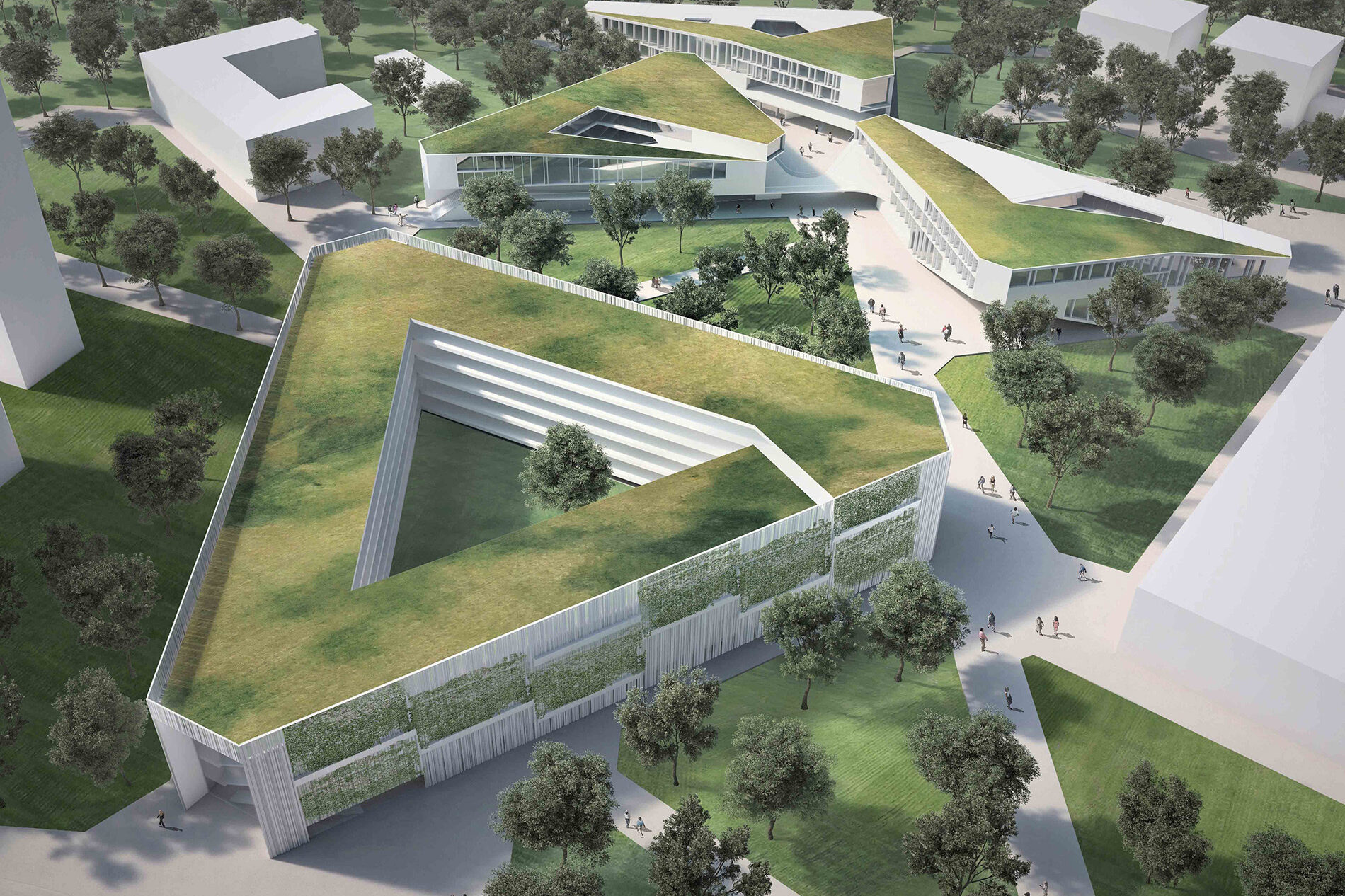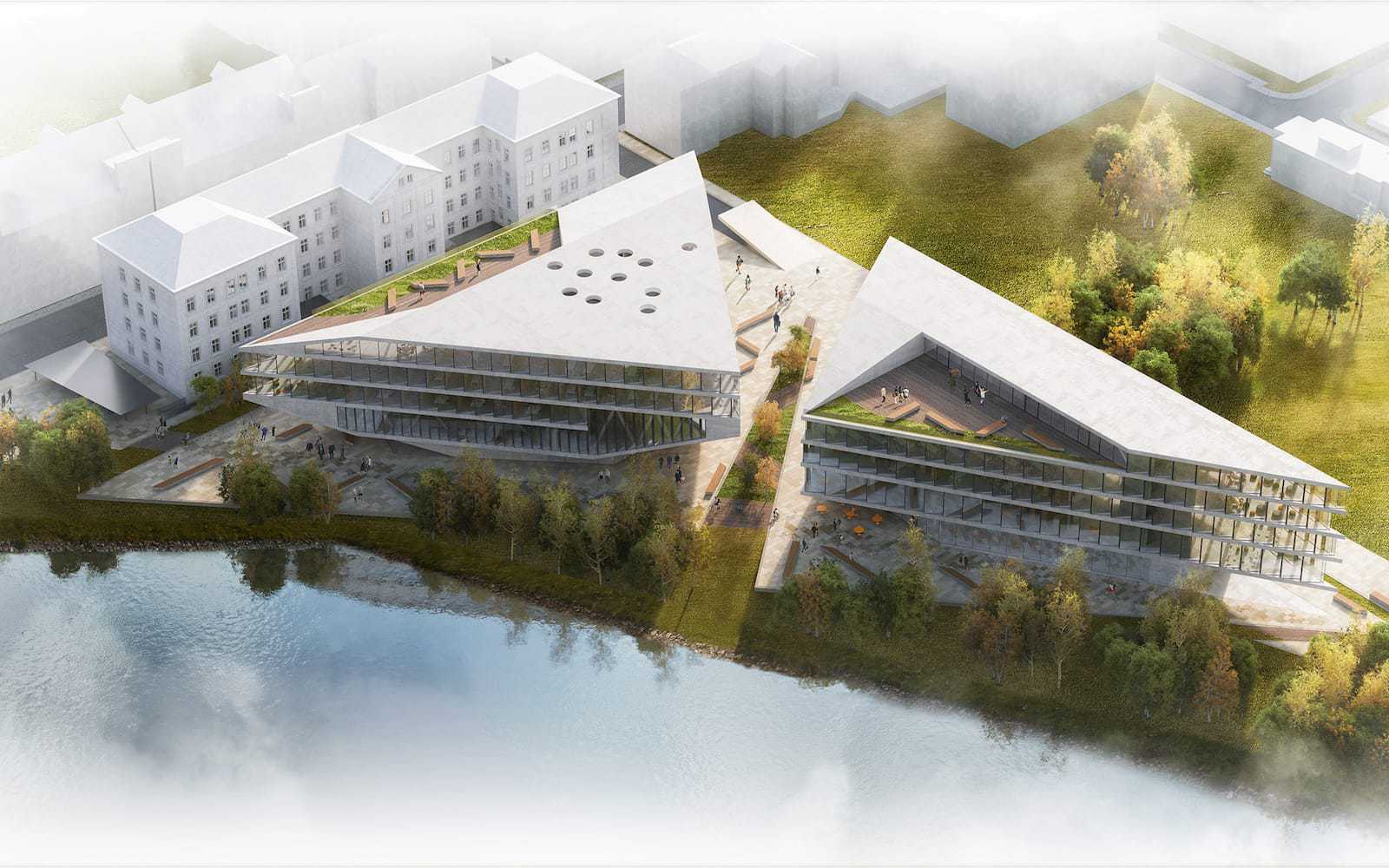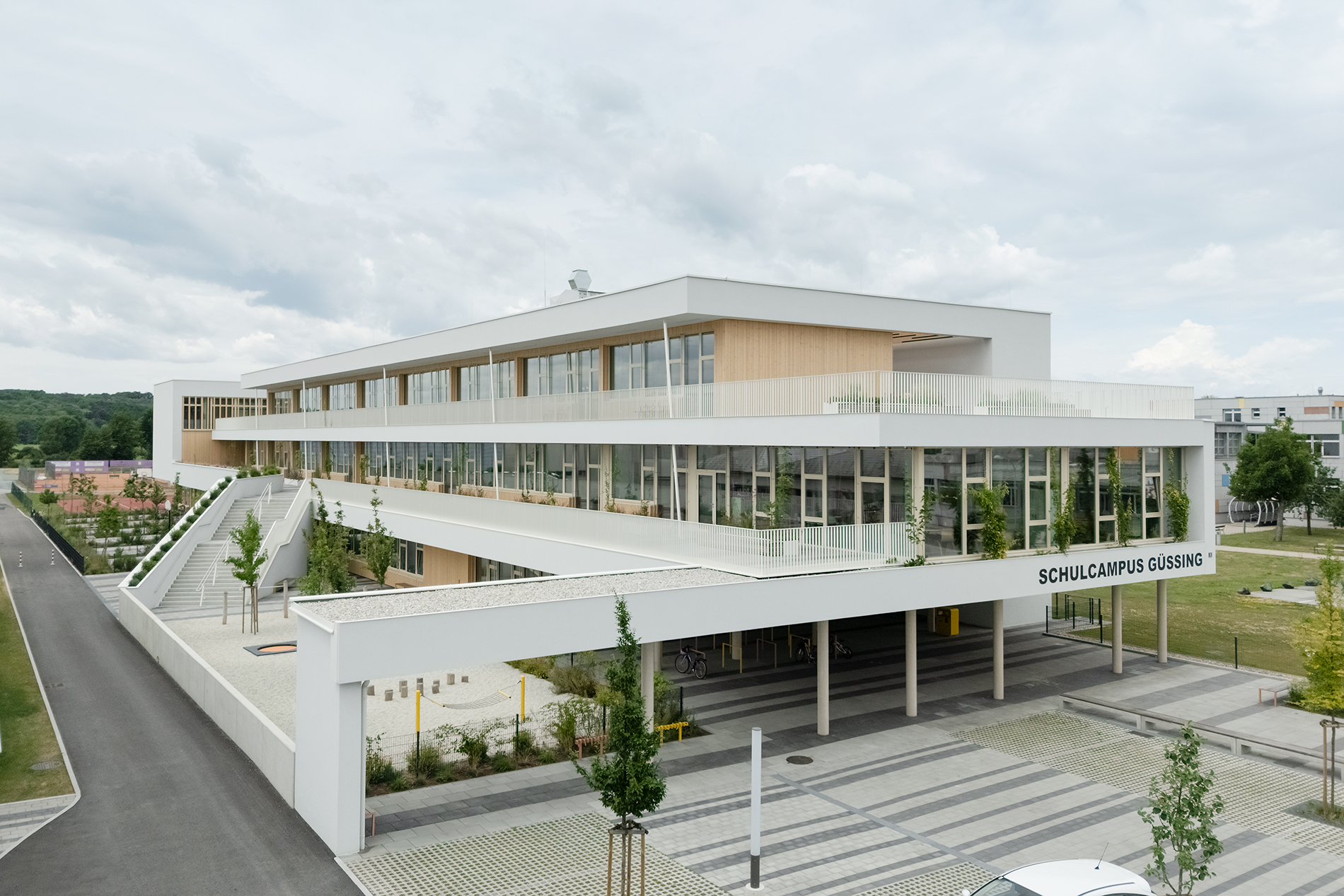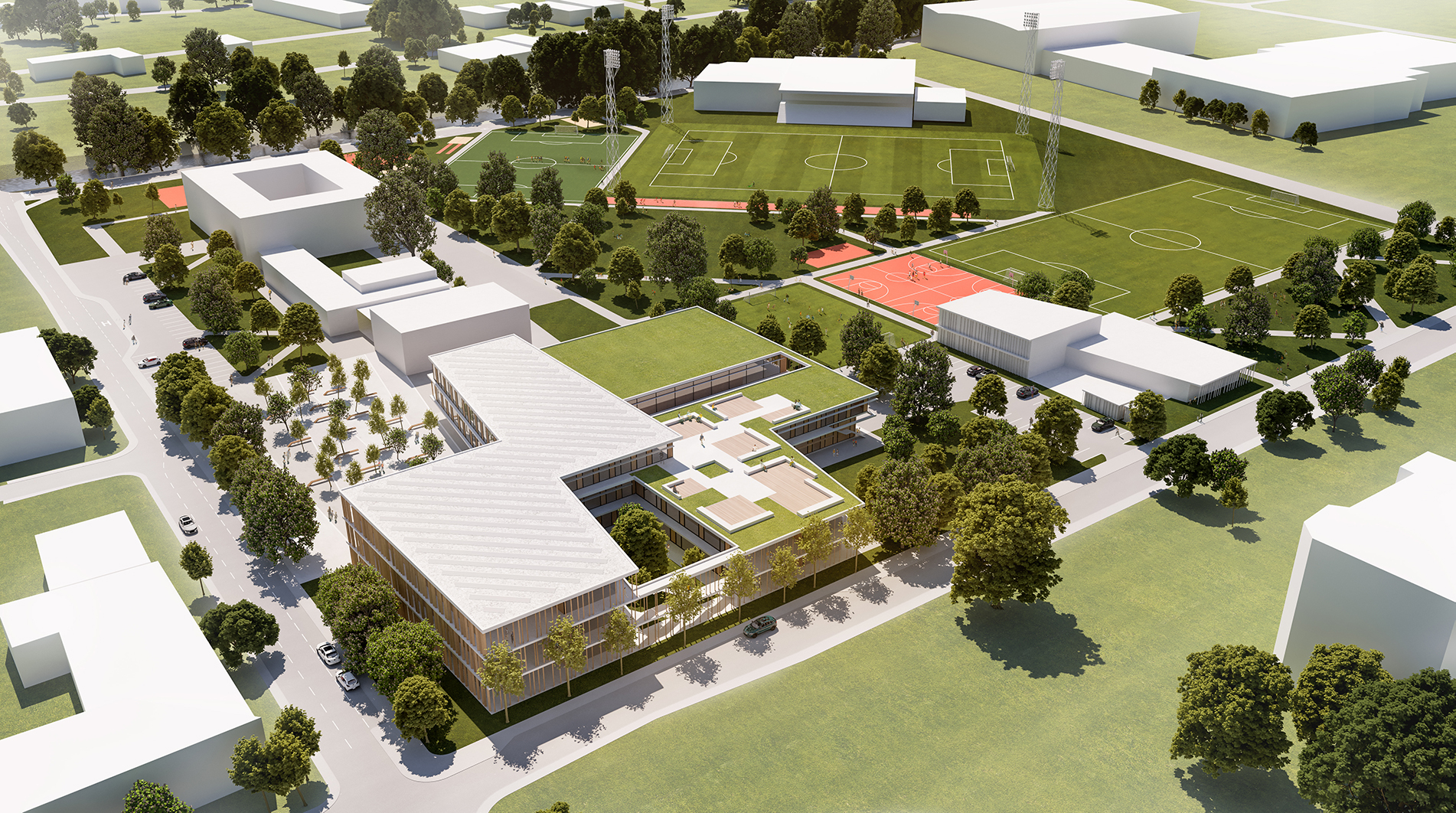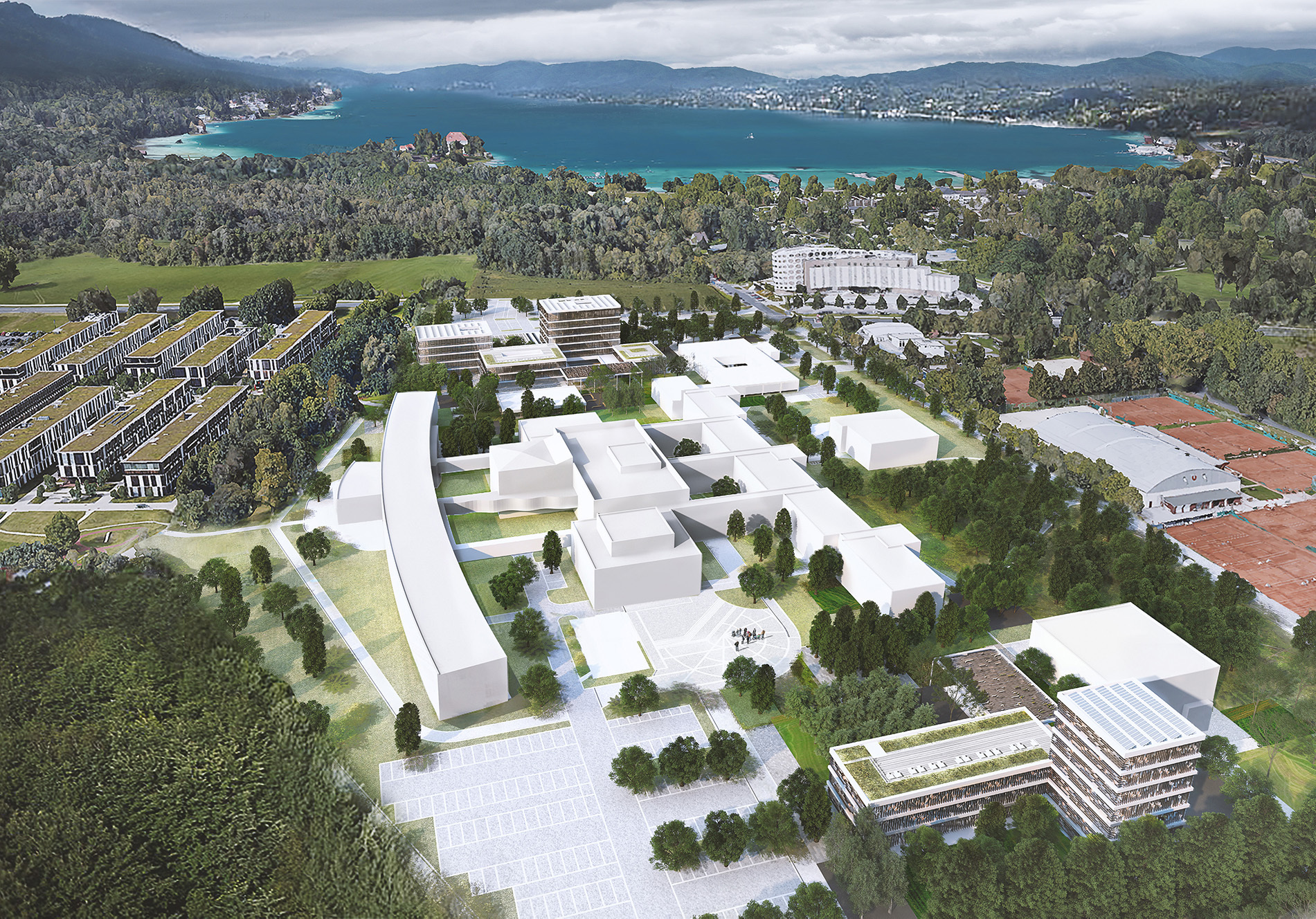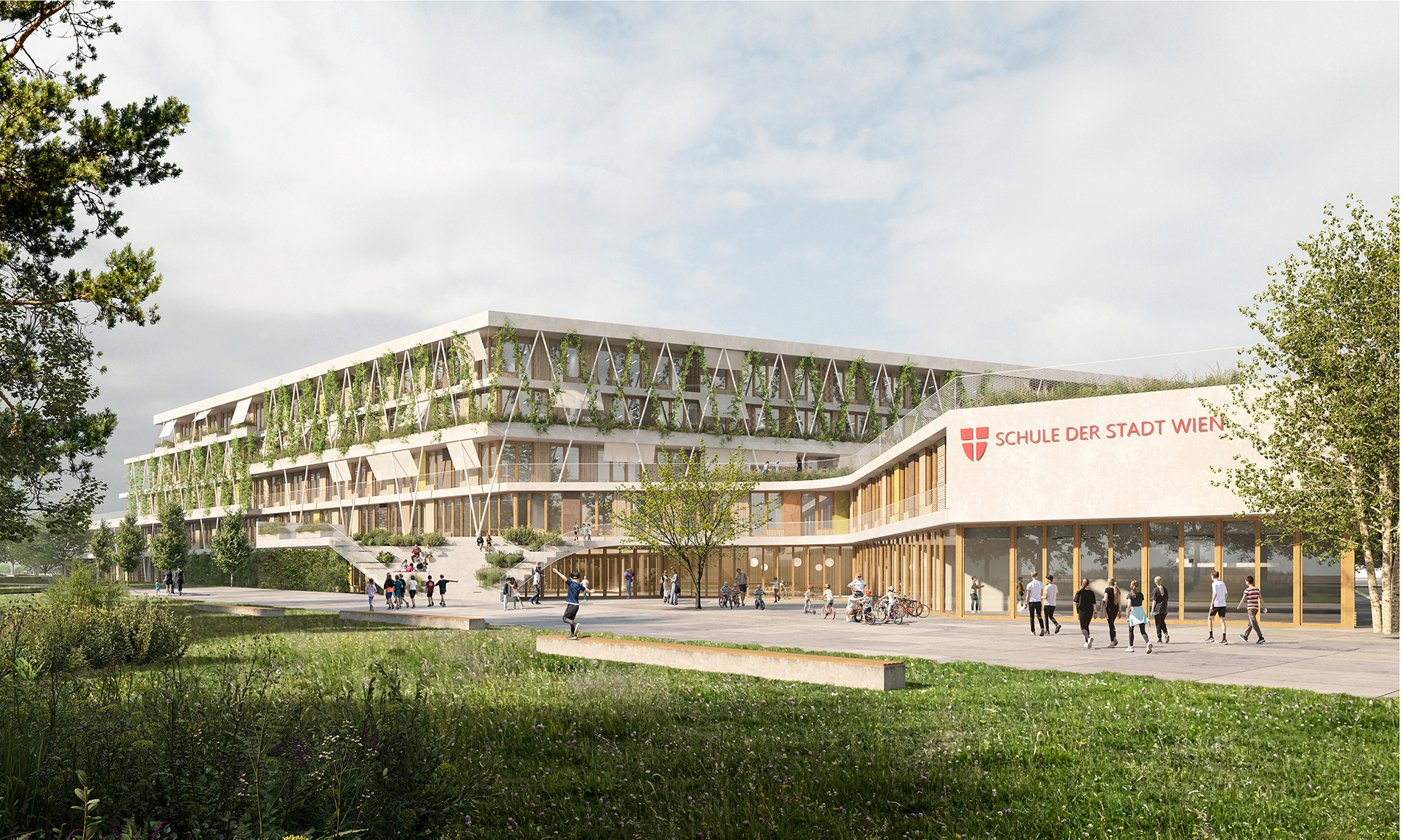Pichler & Traupmann Architects
Pinkafeld University of Applied Sciences
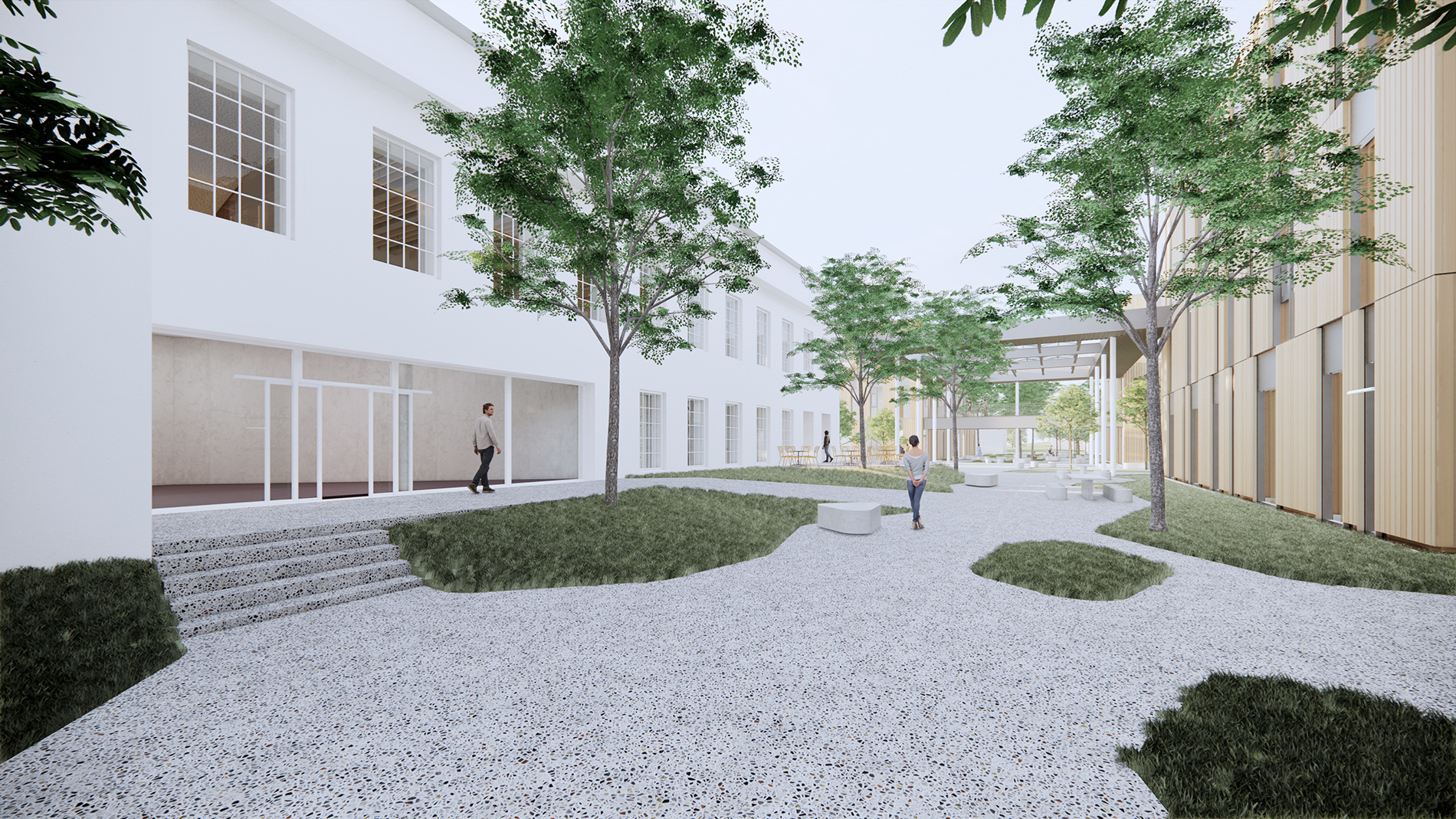
Year
2019
Venue
Pinkafeld
State
Under Construction
Category
Education
Size
17.300 m²
Year |
Venue |
State |
Category |
Size |
|---|---|---|---|---|
2019 |
Pinkafeld |
Under Construction |
Education |
17.300 m² |
Year
2019
Venue
Pinkafeld
State
Under Construction
Category
Education
Size
17.300 m²
FH PINKAFELD
The term campus [ ˈkampʊs] derives from the Latin word for “field”. Since the 18th century it has been used in the USA to describe the buildings and facilities of a university erected outside the city, usually surrounded by park-like grounds.” (Wikipedia).
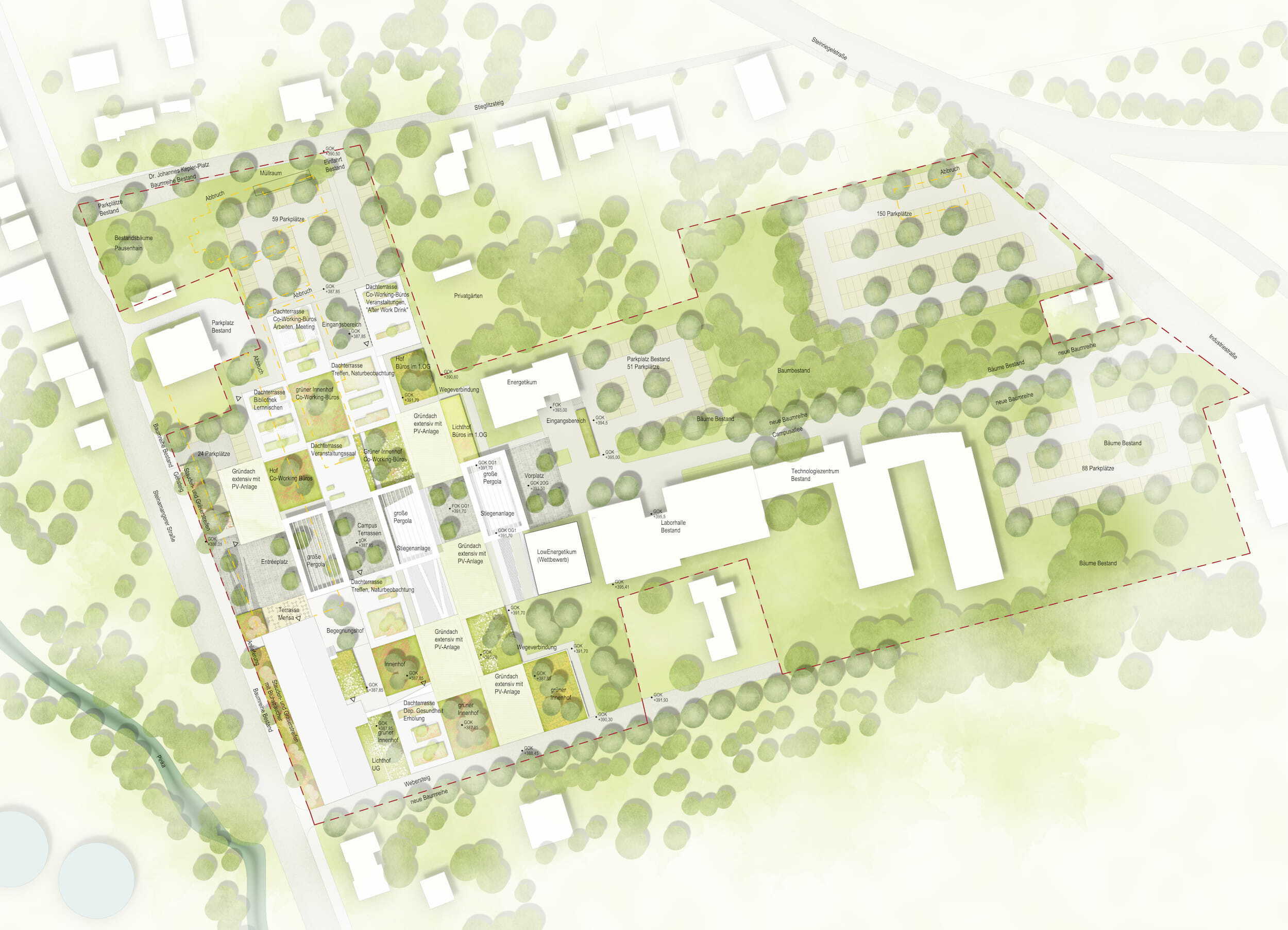
Building block system | Modularity | Flexibility | Adaptability | Flexibly connectable | Phase compatibility
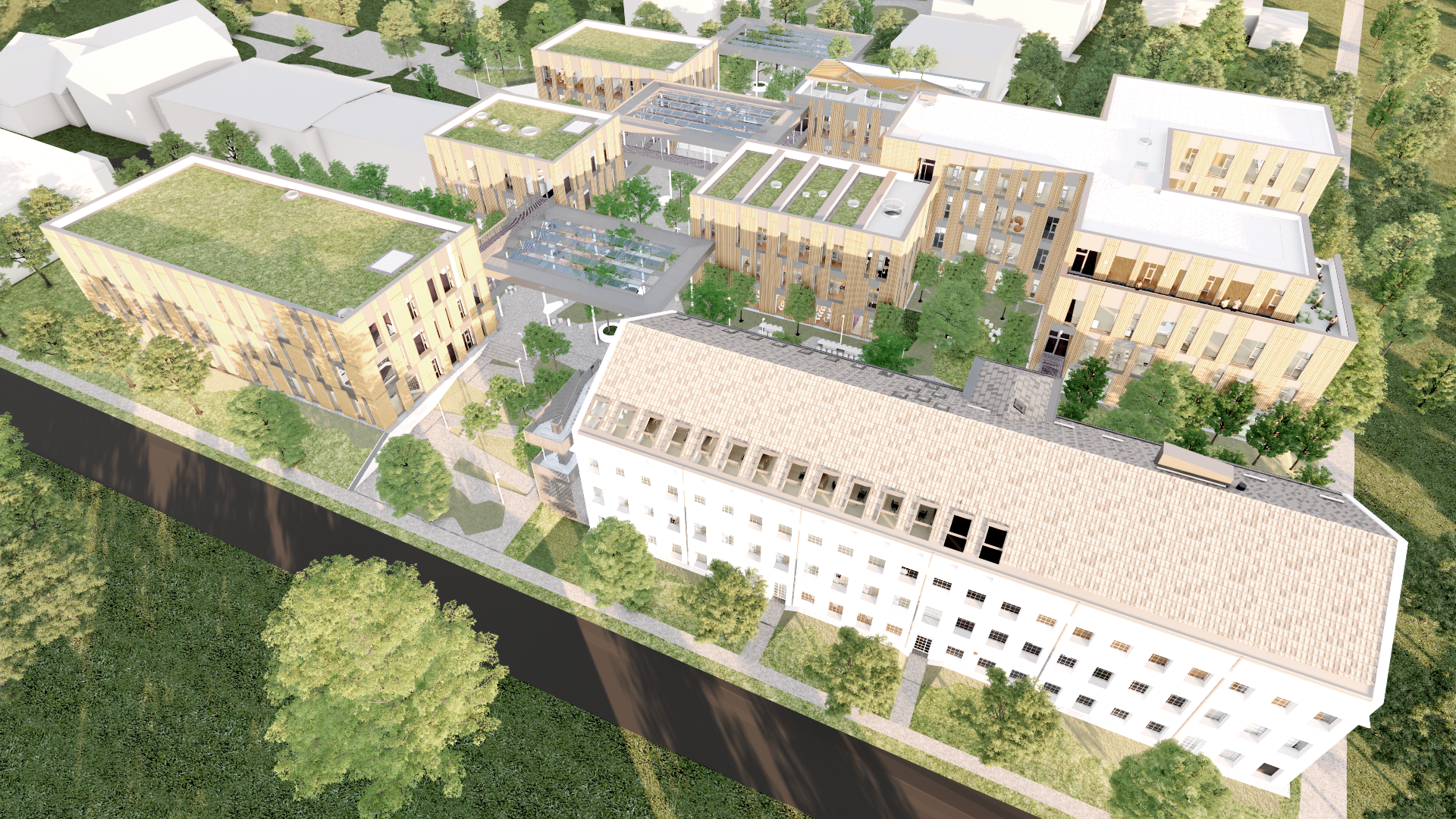
The project reflects this definition in a demonstrably clear way. Starting from a basic module, it arranges the building volumes and the open spaces in accordance with the logic of a campus site: a classic system of green courtyards alternating with building masses is developed.
The advantages of this kind of organisation and development pattern are well known: the small-scale structures create a playful lightness in the shaping and layout of the building volumes, define open spaces of genuine quality, generate reasonably sized and easily recognisable units, and convey an evenly balanced interplay of all functions to create a larger whole. The basic pattern starts from a circulation route with units attached on both sides in a similar way, producing an efficient basic system that exploits its organisational potential by means of repetition.
The “interruption” of this repetitive moment is introduced by a special feature aimed for: the semantic exaggeration of a wider route generates the principal circulation axis. Consequently, this main circulation axis for the campus runs generously through the site from east to west and connects the site to the town with an expansive gesture. This creates a gateway for this important facility in Pinkafeld and enables people to notice an ensemble that was previously hidden away somewhat behind disused commercial buildings. The main axis of the campus becomes an element that connects both the newly built and existing units in the best possible way. Along this axis all the central units – as defined in the new or expanded programme – are laid out. This starts with the powerful existing building on Steinamangerer Straße, which will be converted into a canteen and seminar complex. The library will be positioned on the north side, i.e. diagonally opposite.
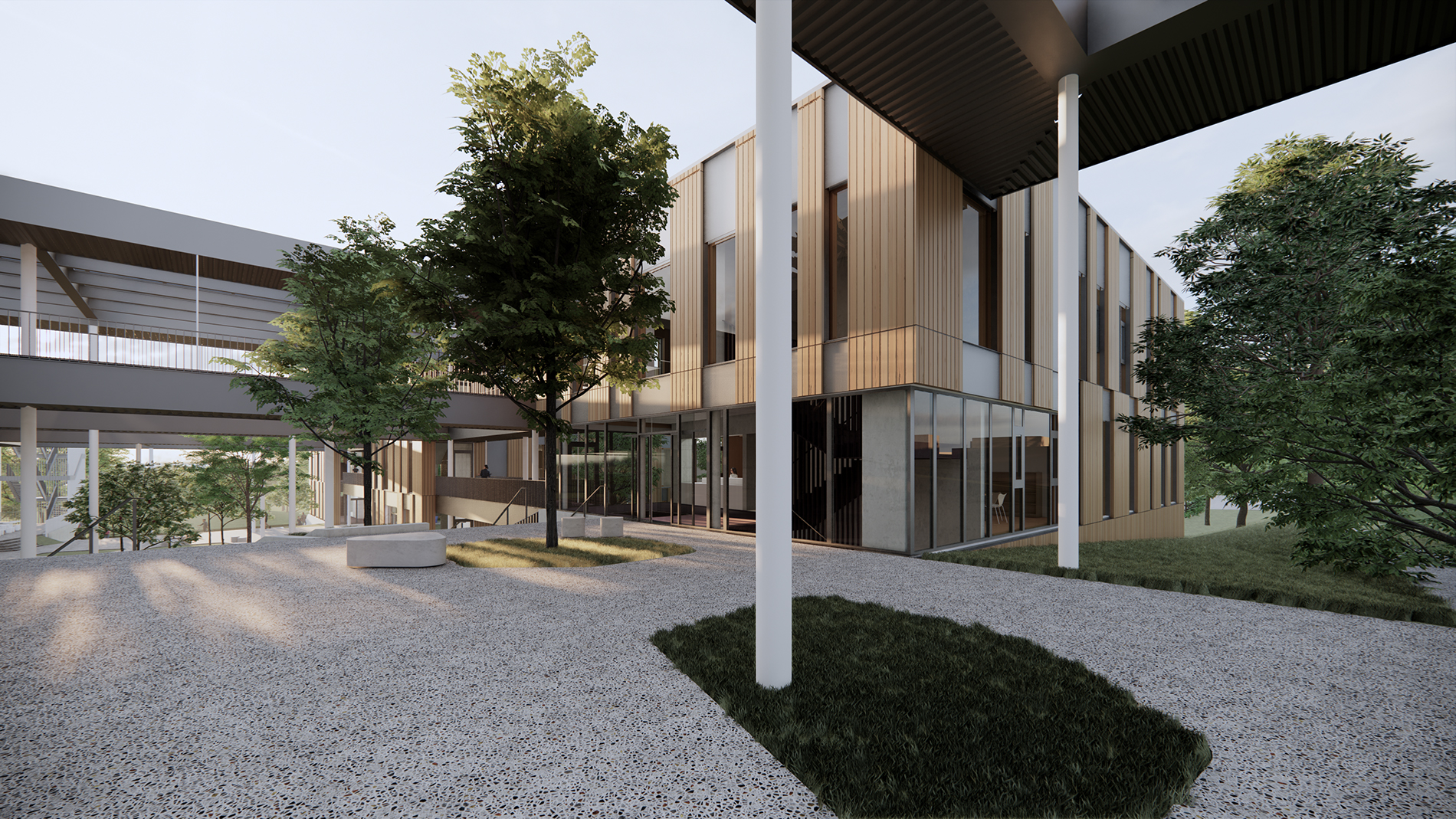
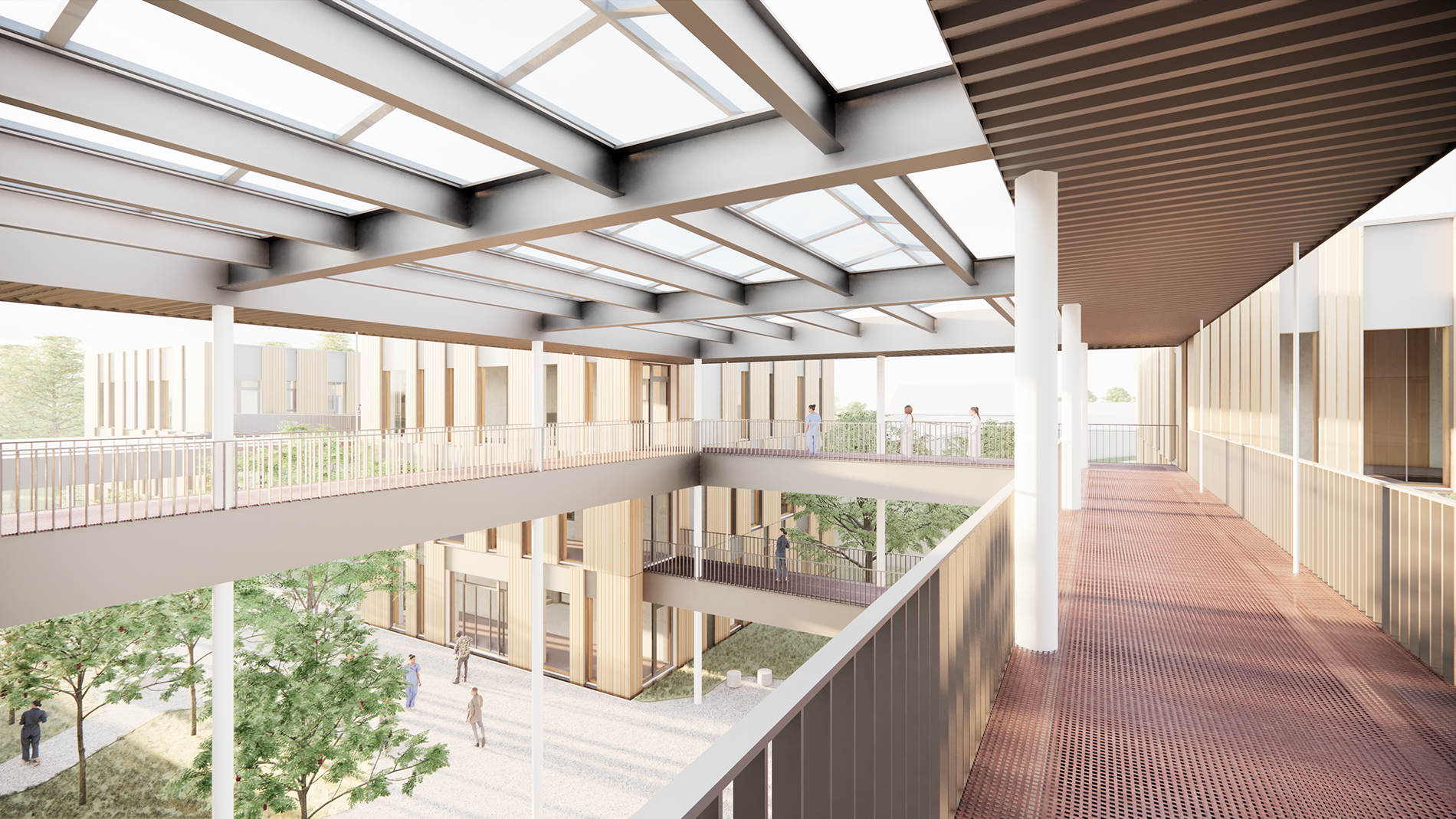
Further on, the events hall is to the south, with the ÖH (Austrian Student Union) and the general administration units on the north side. The importance of the main campus axis will also be emphasised by hovering roofs that offer shade and consequently become the main space in which to spend time, which, by taking account of the topographical situation, mutates into an open space with flights of steps and ramps that offers a wide variety of experiences and can be used in many different ways. This centre of the complex is also conceived as the “green axis“ with powerful rows of tree that indicate and flank the route from the large carpark and also link the existing buildings of the FH and the Technology Centre with the newly built complex.
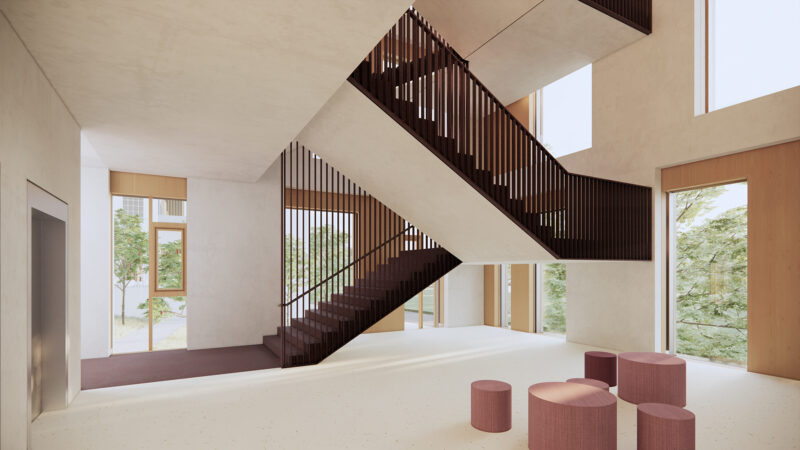
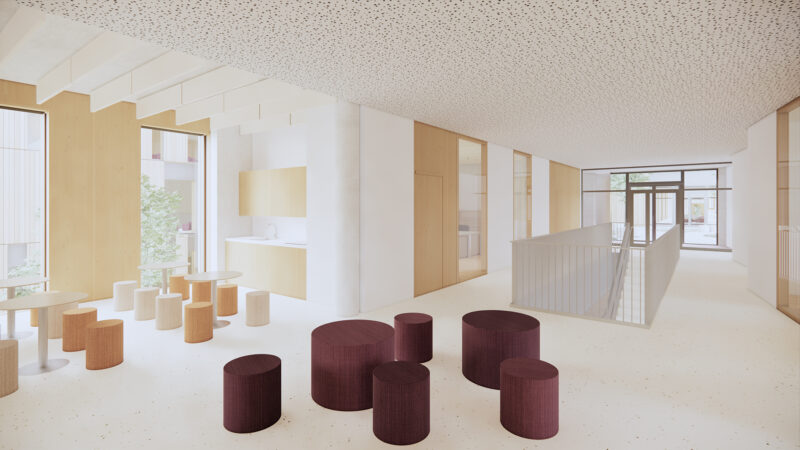
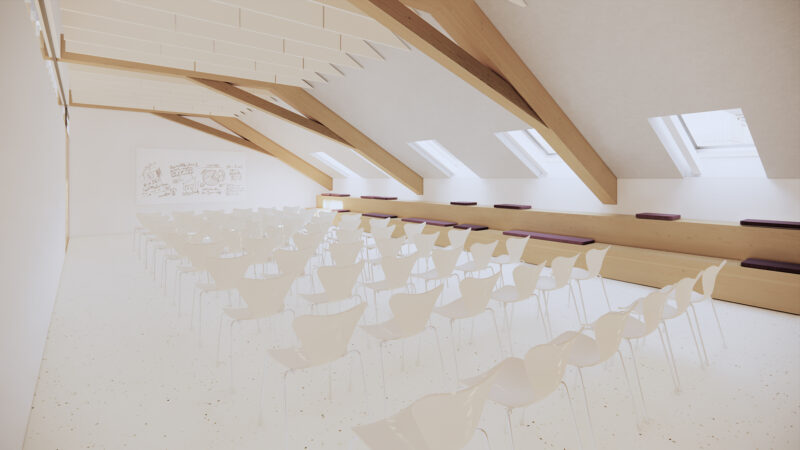

The building block system offers several decisive advantages:
• It is possible to phase the erection of the buildings – in accordance with the requirements of the programme and the available budget.
• Phased development enables the strategically staggered move of the various units into new premises to be well organised, while also allowing the desolate existing buildings to be demolished one after the other.
• The units can be combined with each other in different directions.
• The possibility of reacting appropriately to changing sizes and contexts is ensured.
• Expansion possibilities in different directions are available.
• It is possible to add further storeys but also to partly enclose the open ground floor zones.
• Moderate extensions of the volumes by means of additional buildings to meet requirements are possible without compromising the system’s structural logic and legibility.




In summary it can be said that the campus FH Pinkafeld will be a place of different interplays – the interlacing of open and closed spaces, the interweaving of people and buildings, the meshing of building mass and open space. It will be a place of possibilities and exchange, the system of an adaptable structure that adjusts to meet new demands – a smart answer to smart society, so to speak.
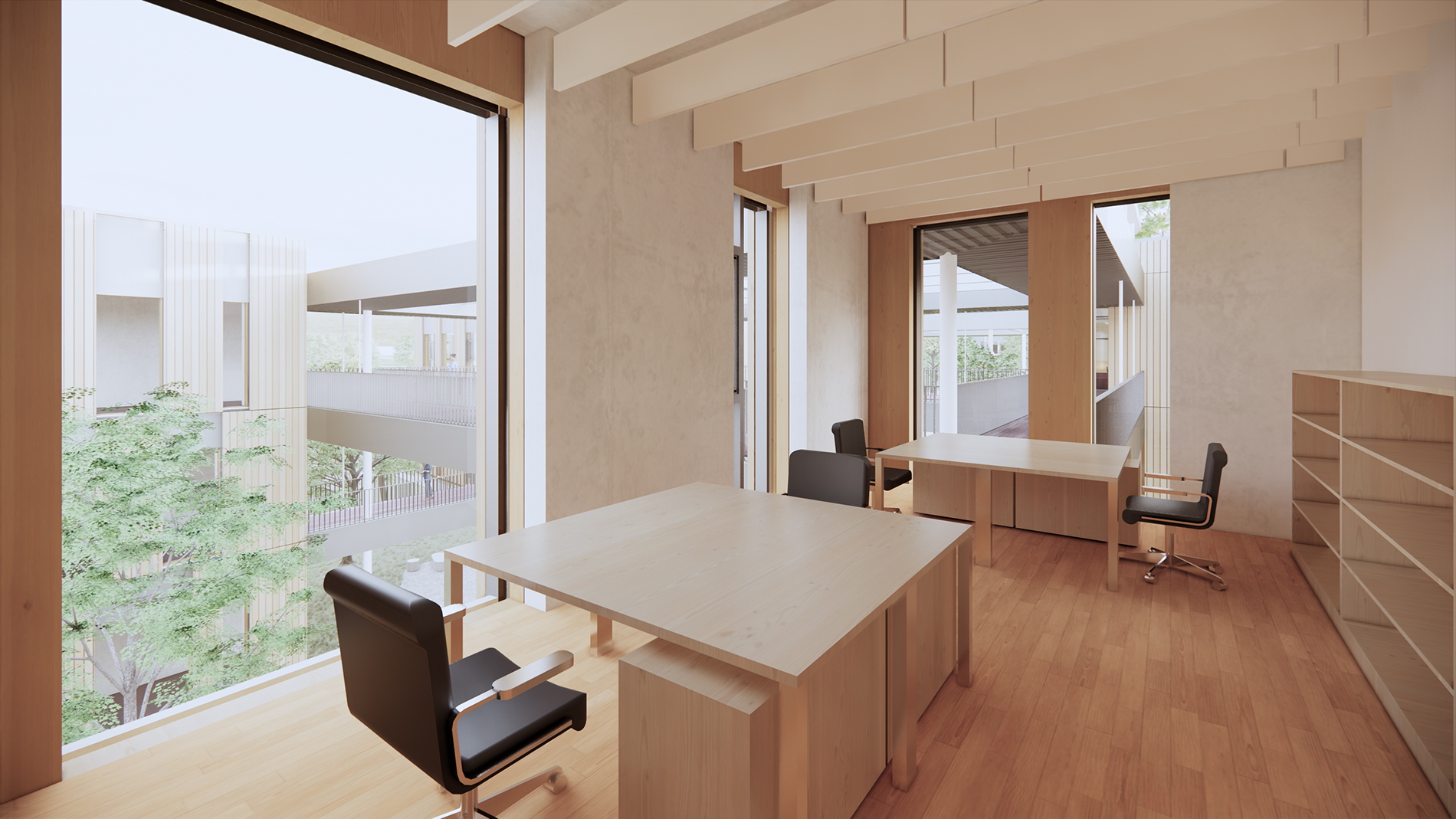
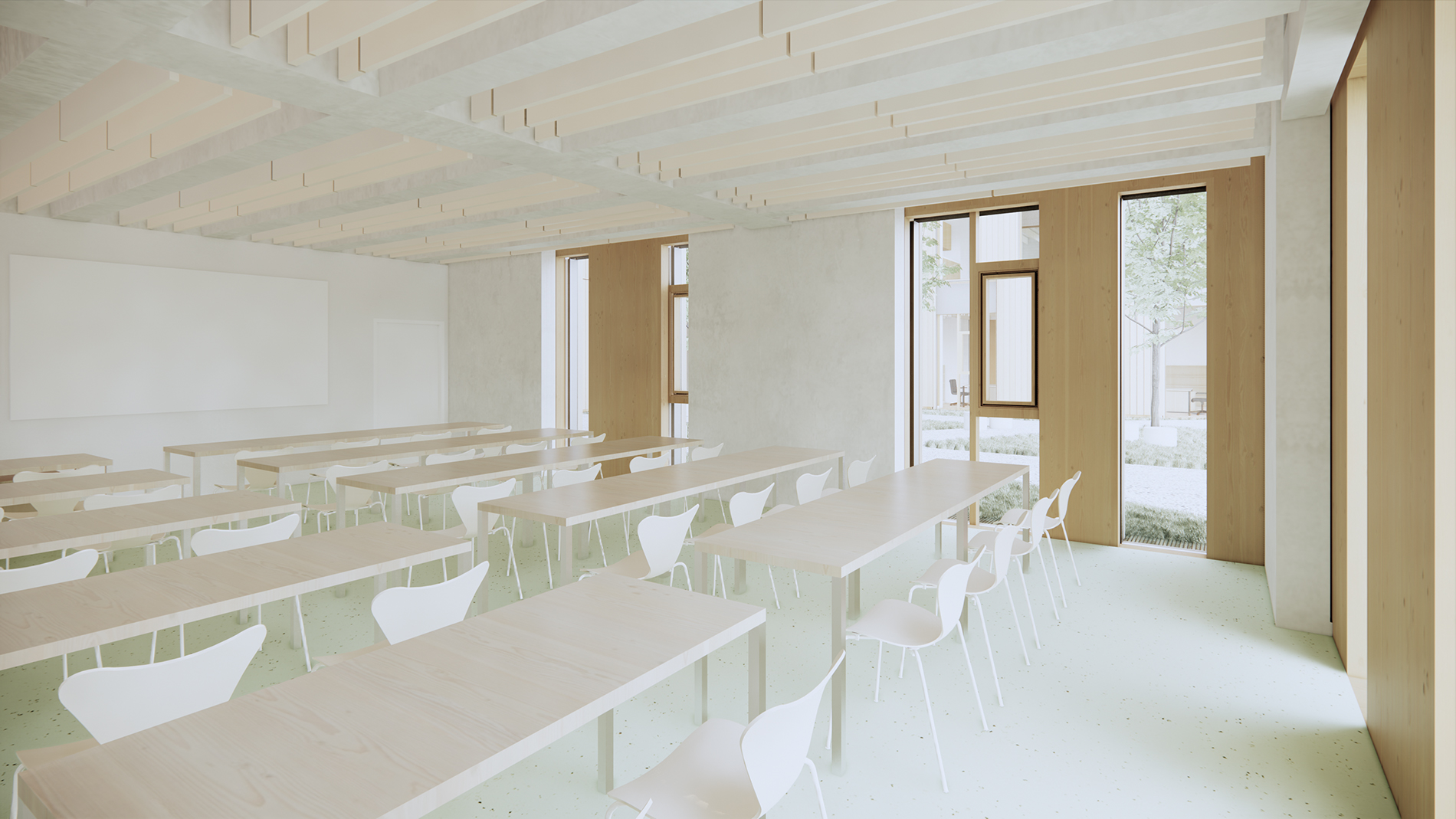
Architecture
Design team
Bartosz Lewandowski (teamleader)
Nikola Beim
Klemens Gabriel
Anna Gulinska
Jakub Kaczmarek
Piotr Pindor
Wolfgang Windt
Michael Wögerbauer
Project team
Michael Wögerbauer (project leader)
Klemens Gabriel (coordinator general planner)
Adnan Balic
Carlos Celles
Ioana Constantin
Carmen Deisenhammer
Leonie Eitzenberger
Mohammad Ekhlasi
Peter Grandits
David Guisado
Anna Gulinska
Barbara Jarmaczki
Jakub Kaczmarek
Joachim Kess
Jure Kozmus
Tibor Koczian
Mirjana Petrovic
Markus Schrefl
Julian Straub
Boyan Todorov
Severin Türk
Anna Tuzova
Wolfgang Windt
Arkady Zavialov
Client
LIB - Landesimmobilien Burgenland GmbH, Eisenstadt
Landscape design
Carla Lo, Vienna
Statics, Geotechnics, Cost Estimation
Fritsch Chiari & Partner ZT GmbH, Vienna
Building services
ZFG ALTHERM Engineering GmbH, Baden
Building physics
RWT PLUS ZT GmbH, Vienna
Structural fire protection
Norbert Rabl ZT GmbH, Graz
Electrical planning
Kubik Project GesmbH, Gießhübl
Kitchen planning
Ronge & Partner GmbH, Baden
Hard facts
Start of planning: 2019
Start of construction: 2023
Completion: 2026
Usable floor area: 14.676 m²
Gross floor area: 17.300 m²
Location: Pinkafeld
Function: Campus of a university of applied sciences
Scope: EU-wide open, one-stage competition
Renderings
Pichler & Traupmann Architects
Award
1st prize
